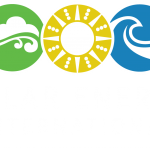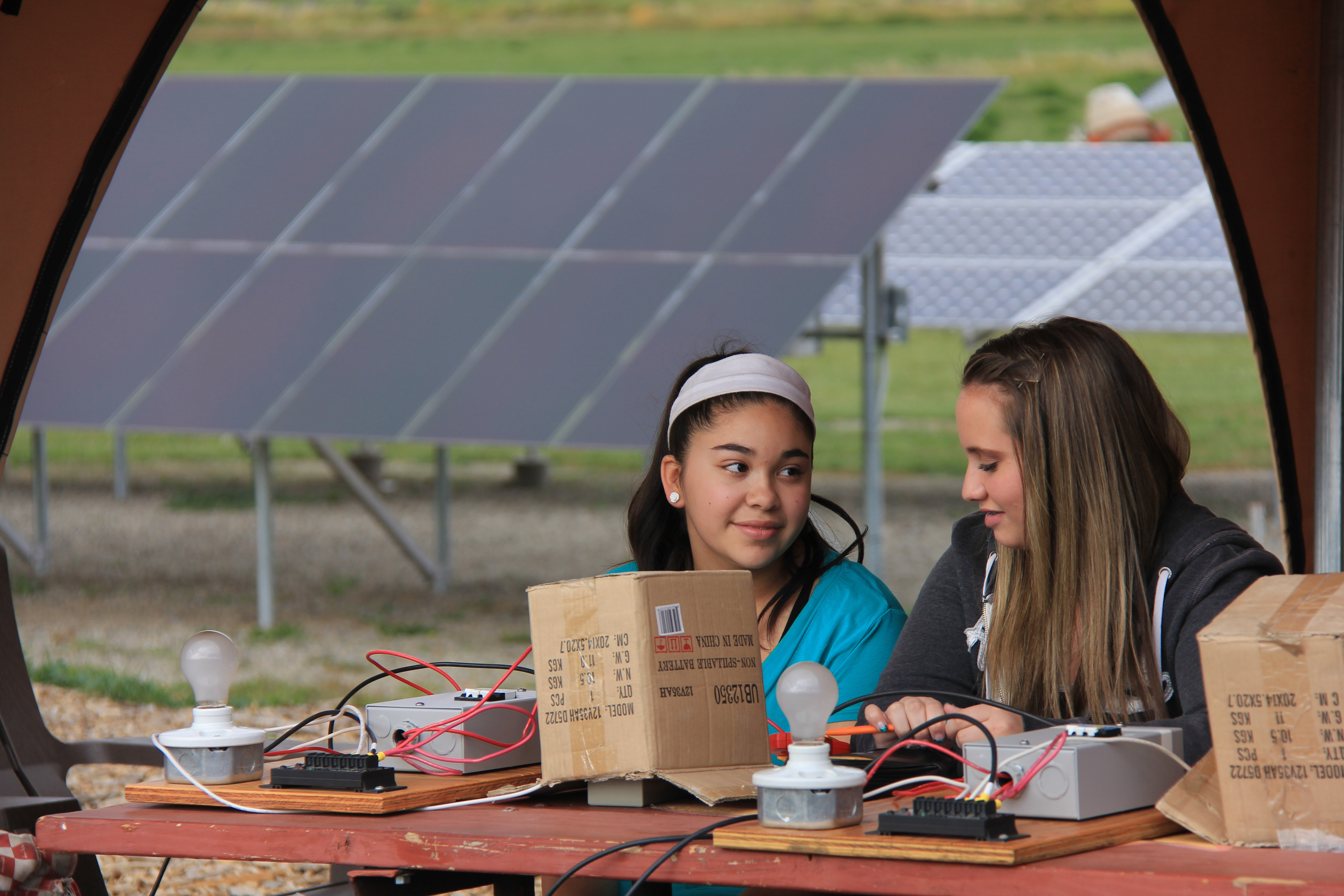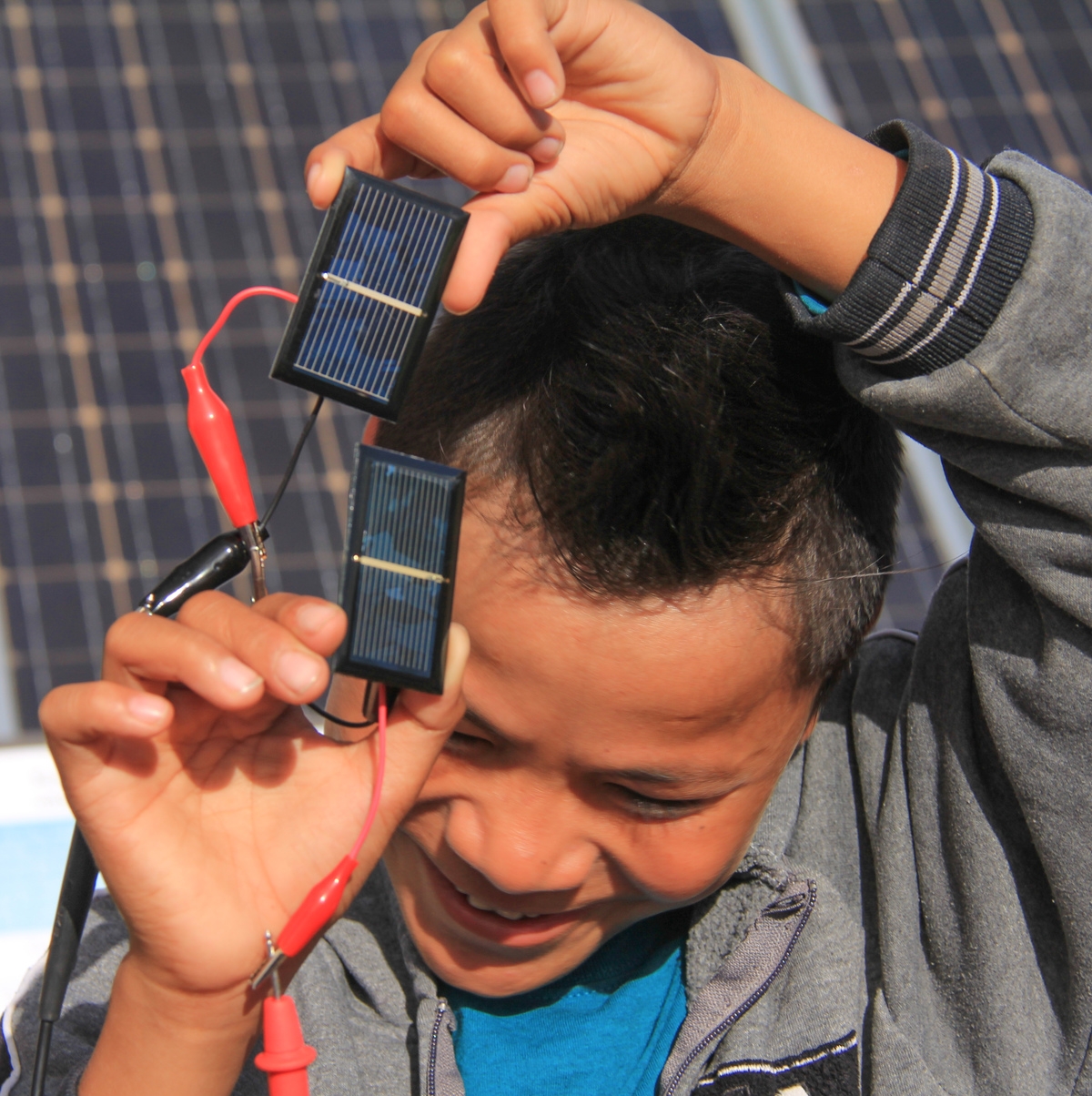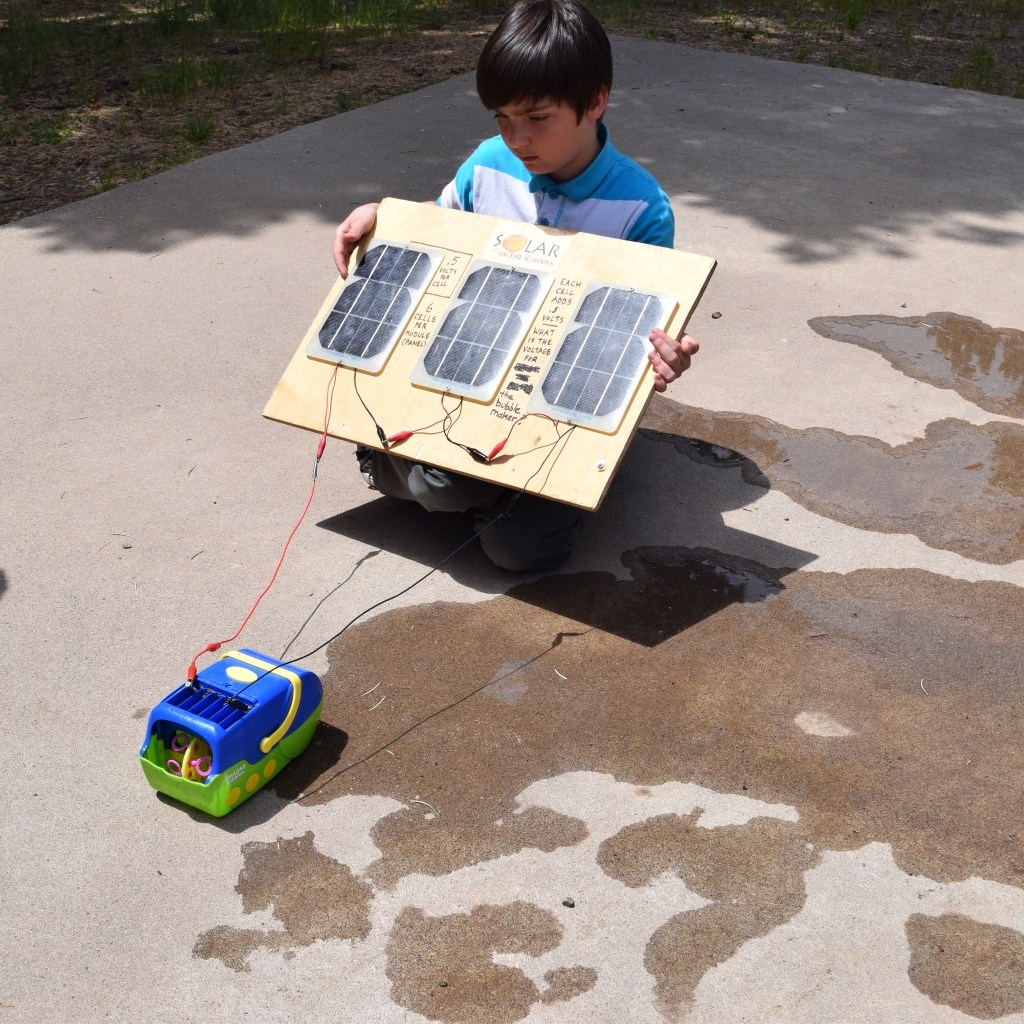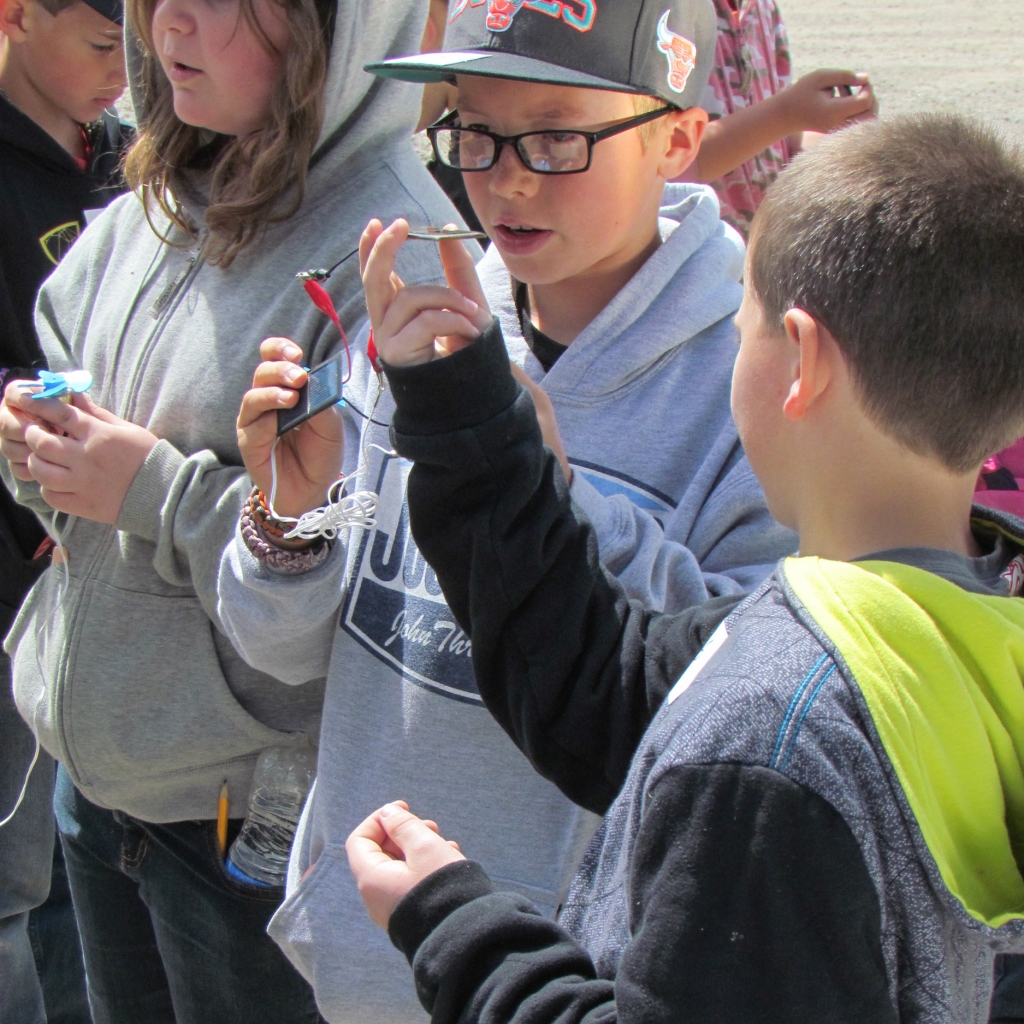Solar In the Schools (SIS) teaches about the different types of renewable energy, basic electricity, and solar photovoltaics using online curriculum and in-person experiential learning for K-12. Our goal is to encourage youth to develop a deeper consideration of the systems that deliver us power, and to compel teachers to skillfully incorporate renewable energy into their lessons.
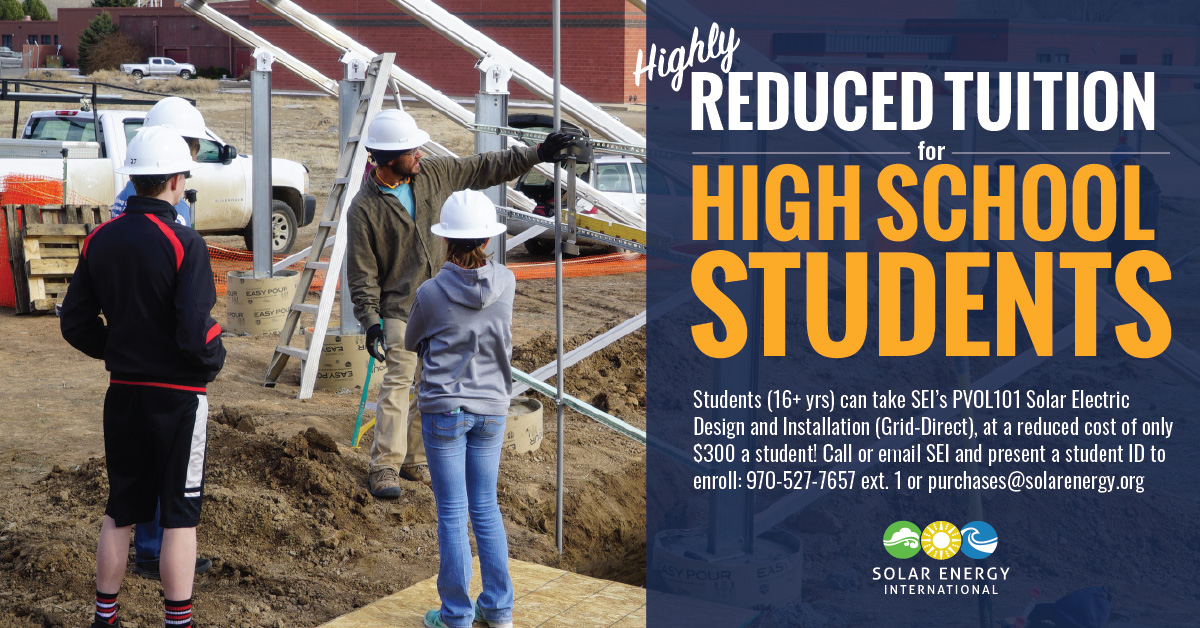
HIGH-SCHOOL TECHNICAL SOLAR TRAINING
Solar Energy International (SEI) is committed to providing technical skills training to High School students in renewable energy! Specifically, the Solar in the Schools (SIS) High School Career Pathways Program is focused on training a young workforce for jobs after high school. SEI is committed to delivering concurrent post-secondary training for a young workforce in preparation for the solar jobs of tomorrow.
SEI-SIS is excited to offer two options for high school students (16+ yrs). Individual students can take our most popular course, PVOL101, at only $300/student OR high school educators can explore curriculum licensing for your high school via the Solar In the Schools High School Career Pathways program.
Solar Energy International’s Approach
SEI equips participating high school teachers with the skills and tools to offer solar training to students. SEI trains teachers on it’s industry-leading curriculum, shares technical photovoltaic (PV) curriculum, and provides hands-on labs for teachers to implement in the classroom.
SEI’s industry-recognized Record of Completion is awarded to successful students after finishing SEI’s most popular course, PVOL101: Solar Electric Design and Installation (Grid-Direct). This is the same training adults receive. A student can present this education to a company and be hired at an introductory level, launching a career in the solar industry, or use it as preparation for STEM majors in college.
Delivering Solar Energy Curriculum for High Schools
Solar In the Schools High School Career Pathways program offers two curriculum delivery options:
Option 1. Delivery through SEI’s online platform, includes RE100 Introduction to Renewable Energy and PVOL101 Solar Electric Design and Installation (Grid-Direct).
Students will receive 86 hours of total education, including:
• 6 hours of online training through SEI’s RE100: Introduction to Renewable Energy course
• 60 hours of online training through SEI’s PVOL101HS: Solar Electric Design and Installation (Grid-Direct) course
• 20 hours of hands-on lab activities
OR
Option 2. Delivery through licensing of SEI’s PV101 Solar Electric Design and Installation (Grid-Direct) in-person curriculum
Students will receive 66 hours of total education, including:
• 6 hours of online training through SEI’s RE100: Introduction to Renewable Energy course
• 40 hours of in-person training taught by SEI-trained school representative through licensing of SEI’s PV101 Solar Electric Design and Installation (Grid-Direct)
• 20 hours of hands-on lab activities
Highly Discounted Training for High Schoolers
SEI-SIS is excited to offer individual high school students (16+ yrs) our most popular course, PVOL101 Solar Electric Design and Installation (Grid-Direct), at a reduced cost of $300/student. We are offering this incredible opportunity to further accelerate our goal of “Building the Global Solar Energy Workforce” – training a young workforce in preparation for the solar jobs of tomorrow.
Upon successful completion of the course students will receive SEI’s industry-recognized Record of Completion. A student can present this education to a company and be hired at an introductory level, launching a career in the solar industry, or use it as preparation for STEM majors in college.
You must send a picture / scan of your high school student id to [email protected] at the time of registration.
SOLAR IN THE SCHOOLS COLORADO
Solar in the Schools Colorado provides in-person K-12 education to Colorado based teachers and students through classroom presentations, hands-on solar labs, teacher trainings and equipment lending. We encourage youth to develop deeper consideration of the systems that deliver us power, and teach teachers to skillfully incorporate renewable energy into their lessons.
Energy Presentations
This is an interactive and hands-on presentation. Students will learn where our energy comes from at a local, national, and global scale. They will see and feel energy conservation and efficiency at work with hands-on activities and experiment with solar cells to turn electric motors and power small toys. This is offered as an in-classroom presentation to your school. Can be tailored to grade level. Please contact us for details.
Solar Lab Week for 8th Graders
SEI’s Solar In the Schools (SIS) outreach program starts off it’s fall season of renewable energy labs with regional 8th grade students. Students arrive at SEI’s lab facility in Paonia, CO for a full day of introductory solar energy activities. Students are engaged in hands-on solar energy lab stations which include lessons and activities in energy efficiency, measuring power, solar orientation, solar site analysis, testing properties of a photovoltaic cell, and solar art.
Lending Library
SIS loans out renewable energy training equipment to teachers for classrooms. Our library includes:
• Solar Cell Set – with this set students become familiar with the properties of a photovoltaic cell, the photovoltaic effect and conditions which affect pv cells
• Energy Audit Kit – with this kit students measure how much power various devices use to determine their energy efficiency
• Solar Power Monitor – students can build and test several solar circuits, wire solar modules in series and parallel to change voltage and amperage
Special Events
SIS loves to attends festivals, fairs and career days please invite us to yours! We’ll pack our SIS PV-van with fun hands-on teaching equipment and demos. That’s how we roll!
Summer Teacher Training
SEI’s Solar In the Schools has teamed up with Colorado Parks and Wildlife’s Teaching Environmental Science Naturally (TEN) to integrate renewable energy science and PV labs in an outdoor classroom setting and with the Knowles Teacher Initiative to train teachers on how to use engineering design principles to teach solar energy technology and solve real-world problems. We welcome opportunities to partner with schools and organizations to provide teachers the training to integrate solar energy technologies in their classroom. Teacher trainings are also a great opportunity to network with energy-conscious teachers from across the region.

OUR SUPPORTERS
RESOURCES
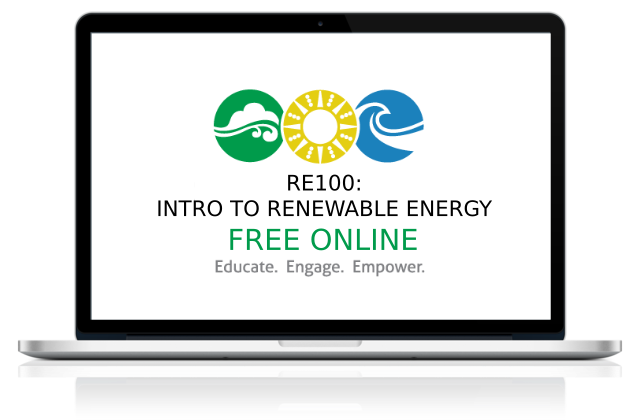 RE 100: Introduction to Renewable Energy
RE 100: Introduction to Renewable Energy
For students 12 years and beyond! This is a free 10-lesson online course complete with videos, readings, quizzes exercises and discussion forums. The course is written at the high school level with lessons in energy efficiency, solar thermal, solar electric, wind, micro-hydro, renewable energy in the developing world and the economics of renewable energy. We highly encourage teachers to take this course and evaluate it as curriculum to be used with students. This course is now also available EN ESPANOL.
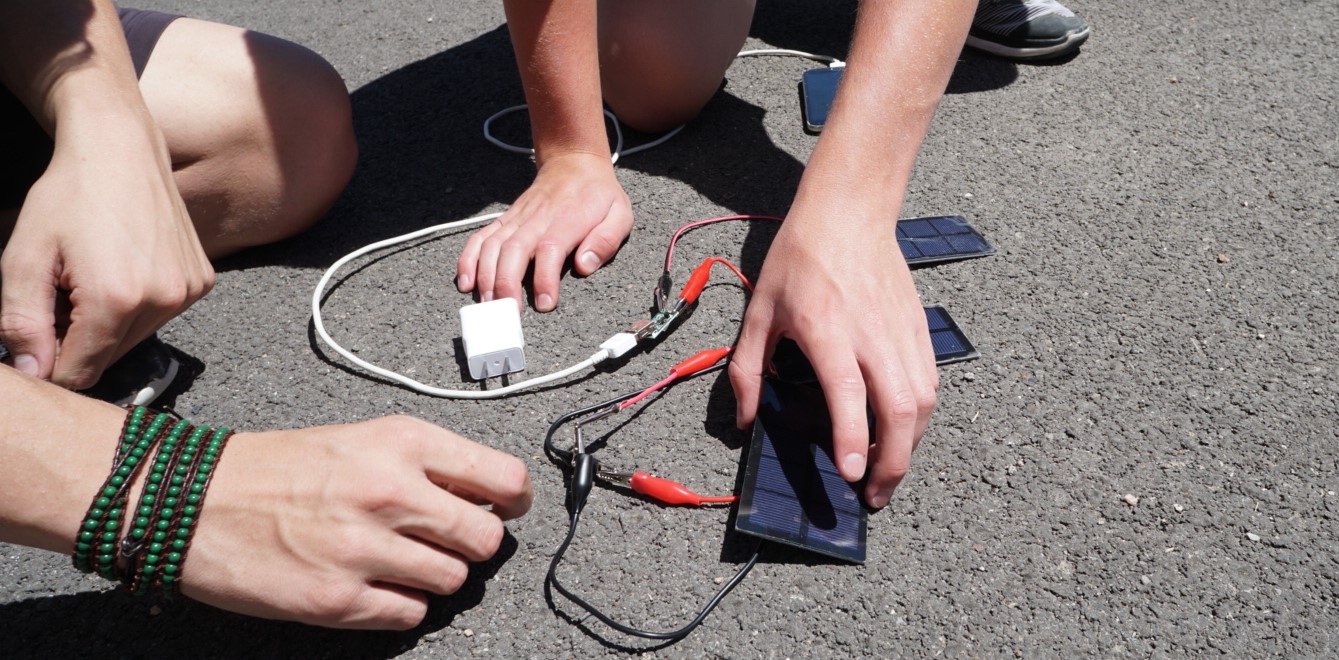 Engineering a Solar Charger NAAEE
Engineering a Solar Charger NAAEE
This curriculum is one unit in an upcoming release of SEI’s popular introductory course PV101 curriculum tailored for high school students. Students can take this as an accelerated 1-semester or full-year SEI Solar Energy Training for High Schools leading to an SEI certificate in introductory solar electric design and installation.
Engineering a Solar Cellphone Charger – NAAEE
Please read the “teacher overview” for a materials list, day-by-day plan, NGSS alignment and reflections about classroom implementation.
Teacher Notes (read first)
Introduction (optional)
Phase 1: Problem Definition
Phase 2: Design exploration
Phase 3: Optimization Azimuth
Phase 4: Optimization Angle
Phase 5: Optimization Temperature
Phase 6: Communication
Rubric
The Engineering Design process utilized in this unit was developed by senior fellows in the Knowles Teacher Initiative. For more engineering lessons and training in engineering design please check out the Knowles Academy
Please contact Ben Graves [email protected] for more information on this unit. Please contact Andrea Wang [email protected] for more information on the Solar In the Schools program.
FREQUENTLY ASKED QUESTIONS
FAQs for Older Kids
Photovoltaics refers specifically to the practice of converting the sun’s energy directly into electricity using photovoltaic cells. Photovoltaic cells are often referred to as PV cells or solar cells.
- Photovoltaic Cell — Thin squares, discs, or films of semiconductor material that generate voltage and current when exposed to sunlight.
- Module — Photovoltaic cells wired together and laminated between a clear superstrate (glazing) and encapsulating substrate.
- Array — One or more modules with mounting hardware and wired together at a specific voltage.
- Charge Controller — Power conditioning equipment to regulate battery voltage.
- Battery Storage — A medium that stores direct current (DC) electrical energy.
- Inverter — An electrical device that changes direct current to alternating current (AC) to operate loads that require alternating current.
- DC Loads — Appliances, motors and equipment powered by direct current.
- AC Loads — Appliances, motors and equipment powered by alternating current.
A solar panel (module) is made up a number of solar cells. Solar cells are generally made from thin wafers of silicon, the second most abundant substance on earth, the same substance that makes up sand. To make the wafers, the silicon is heated to extreme temperatures, and chemicals, usually boron and phosphorous, are added. The addition of these chemicals makes the silicon atoms unstable (their electrons less tightly held). When photons of sunlight hit a solar panel, some are absorbed into the solar cells, where their energy knocks loose some of the modified silicon’s electrons. These loose electrons are forced by electric fields in the PV panel to flow along wires that have been placed within the cells. This flow of electrons through the wires is electricity, and will provide power for whatever load we attach (a calculator, a light bulb, a satellite, etc.)
Because solar cells are modular, a system’s size can be increased (or decreased) over time, according to need.
Details on the workings of solar cells:http://www.howstuffworks.com/solar-cell1.htm
The simplest and least expensive PV systems are designed for day use only. These systems consist of modules wired directly to a DC appliance, with no storage device. When the sun shines on the modules, the electricity generated is used directly by the appliance. Higher insolation (sunshine) levels result in increased power output and greater load capacity. And when the sun stops shining, your appliance stops working.
These simple systems are an appropriate, cost-effective option for loads operated only during the daytime. Examples of day use systems include:
* Remote water pumping with a storage tank.
* Operation of fans, blowers, or circulators to distribute thermal energy during the day for solar water heating systems or ventilation systems.
* Stand-alone, solar-powered appliances such as calculators and toys.
It is also possible, in a utility grid interconnected system (see below), to do without batteries, as such a system is essentially using the grid as its storage device.
Utility-connected systems, also called “grid-connected” or “grid-tied” systems, are for homes or commercial buildings that are connected to an electric utility. They are designed to provide a modest part to all of the building’s total electricity needs. Advances in solar power electronics make it relatively easy to connect a solar electric system to the utility. Energy generated by such a system is first used within the home, and surplus power is “pushed” onto the utility’s wires. In many states of the U.S., local utilities have “net-metering,” which allows a homeowner’s meter to spin backwards when his or her electricity is pushed back onto the grid. When this happens, the utility buys electricity from the homeowner, instead of the other way around! (And the utility pays the homeowner for the retail value of the electricity. Without net-metering, the utility would be forced by law to buy electricity from the homeowner, (an independent producer), at wholesale.)
A draw-back of connecting your PV system to the grid (and using the grid as “storage”) is that when your area suffers a power outage, your PV system automatically shuts off. (This is done intentionally, in order to protect people working on the lines from live electricity.) To avoid this problem, many people introduce batteries to their grid-tied system, which provide power in the event of a utility power outage.
It is critical that heating and cooling systems, (which account for 40% of the energy budget of the average American household), be highly efficient. Electric heaters and air conditioners are tremendous energy hogs; fortunately, more efficient options abound. In addition, it is important that once your house feels comfortable to you, it stays that way–good insulation is crucial. (Preventing air leakage by caulking and sealing is the most cost-effective way of reducing heating and cooling costs.)
A household can save electricity a number of ways, including: purchasing energy efficient appliances and fixtures (e.g. compact fluorescent lights); using solar thermal energy (e.g. drying clothes in the sun, using a solar hot water system); investing in propane or natural gas-powered major appliances (such as refrigerators, stoves, and clothes dryers); and cutting back on appliance use (e.g. turning off lights, abandoning the electric can opener).
A list of top-rated, energy efficient appliances, cars, and trucks http://www.aceee.org
Home energy saving checklist, too: http://www.aceee.org/consumerguide/checklist.htm
Energy-saving appliances, check out http://www.energystar.gov
Solar cookers use no electricity or gas, require no fire wood, and produce no air pollution. The simplest type of solar cooker is a box cooker: an insulated box painted black on the inside and covered with glass or plastic. Sunlight enters the box and heats the food inside. Reflectors can be added to increase the solar insolation captured. An inexpensive cooker can be made out of cardboard, crumpled-up newspaper for insulation, and aluminum foil for reflectors, and can reach temperatures over 250° F. Higher-quality cookers can reach temperatures of up to 425° F.
In many countries of the world, burning wood and animal dung for cooking is wreaking havoc on the environment: contributing to deforestation, desertification, air pollution, and global warming. In addition, cooking over smoky fires contributes to respiratory illnesses, and in many parts of the world, women and children spend over half their waking hours gathering firewood (which, in many places, is becoming more and more scarce). Besides ameliorating these problems, solar cookers can also be used to purify drinking water, sanitize medical instruments, and heat water for laundry. Their potential for bettering lives is tremendous.
And, in this country, cooking outside in a solar cooker can dramatically reduce your home cooling bills in the summer!
The best solar cooking web site we’ve seen is www.solarcooking.org
Yes. Many utility companies have recently installed large photovoltaic arrays to provide consumers with solar generated electricity or as backup systems for “critical” equipment. Solar thermal power plants produce electricity more cheaply than photovoltaic plants, at least in regions where there is little to no cloud cover. (Solar thermal systems need direct sunlight; photovoltaic systems will still function in cloudy conditions, though their output is diminished.) The first commercial solar thermal plant was erected in California’s Mojave Desert in 1984. Despite the success of this project, and the great potential of solar thermal plants in general, only a handful have been built worldwide in the past decade, though there are a number in the planning stages.
PDF Article comparing photovoltaic and solar thermal power plants: http://www.volker-quaschning
Though we make up just 6% of the world’s population, we, the citizens of the United States, consume 25-30% of the energy produced in the world today. We consume twice as much energy as the average British citizen, two and-a-half times as much as the average Japanese citizen, and 106 times that of the average Bangladeshi. Consequently, we Americans produce, per capita, the most greenhouse gases on the planet. As of 1996, each of us here in the US produced, on average, almost twice the greenhouse gases of the average German, and 80 times that of the average Indian.
But don’t despair! Think of all the room we have to improve! According to www.energystar.gov, if, over the next ten years, everyone in the U.S. chose energy-efficient appliances, “we would cut the nation’s utility bills by up to $100 billion and make major reductions in greenhouse gas emissions at the same time.”
FAQs FOR YOUNGER STUDENTS
But wait, there’s more! Plants make food out of sunlight, and then animals eat plants, and then we eat animals (or maybe we just eat plants, if we?re vegetarians). Either way, without sunlight, plants couldn’t make food, and there would be nothing for us to eat. Not only could plants not make food without the sun, they also couldn’t make oxygen, and no animals could breathe, including us! The sun produces nearly all the heat on the planet, too–without it, the earth would be freezing cold–minus hundreds of degrees Fahrenheit, almost as cold as space. The sun also makes the wind blow and the ocean currents flow. Its heat makes clouds, rain, snow, and all the weather on our planet, too.
Check out ThinkQuest’s cool history of energy on planet earth. And if you want to know more about the sun or energy in general, their entire website is pretty cool.
Skipping ahead a few thousand years, in the 1700s someone in Europe figured out you could make water boil by collecting the sun’s heat behind a few panes of glass. A solar hot water heater! From the early 1920s to just before WWII, everyone in Florida heated their water with solar hot water heaters.
Using solar panels to turn the sun’s light directly into electricity is new, though. That technology was only invented only 50 years ago. (Most of this information on the history of solar energy use comes from http://www.abc.net.au/rn/science/earth/stories/s225110.htm.)
When sunlight hits a solar panel, it makes electrons in the silicon move around. (Electrons are teeny tiny specks–they?re way too small for us to see, even under a microscope.) The electrons flow through wires that were built into the solar panel. And presto! We have electricity! We can do whatever we want with this electricity, run a calculator, a CD player, or, if we have big enough solar panels, a satellite! Solar panels are also called photovoltaic panels. “Photo” means light and “voltaic” means electricity.
For cool stuff on satellites and space stations, check out: http://collections.ic.gc.ca/satellites/english/main.html
Once you start trying to save energy, you’ll find that there are some things in your home that you might not have to use at all. Instead of using a clothes dryer, for example, you can dry your clothes outside in the sun. Instead of playing a computer game, you can go do the dishes. (Just kidding! Sort of.)
Eating food from your own garden, or food that’s grown and put into packages near your home also saves energy. (The label on the package usually says where the food comes from.) Reusing and recycling things saves energy, but it saves even more if you don’t use them in the first place!
Once you start thinking about it, you’ll find there are lots of ways to use less energy. It’s even a fun thing to try and do.
Solar cookers are great because they save money and energy, and produce no pollution. People don’t have to cut down trees for firewood, and they make no nasty smoke to hurt people’s lungs, things that are big problems in countries that don’t have as much money as we do. Solar cookers can also be used to make water safe to drink, make doctor’s tools safe to use, and heat water for laundry.
The best solar cooking web site we’ve seen is www.solarcooking.org. They have great instructions for making your own cooker, and lots of other cool information.

